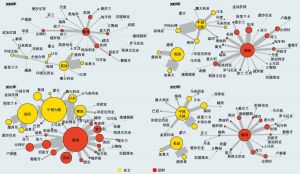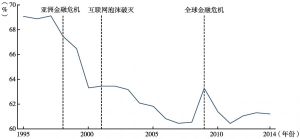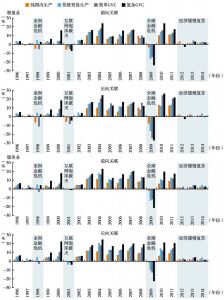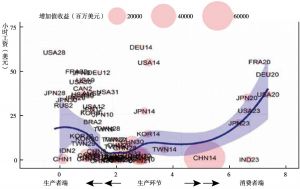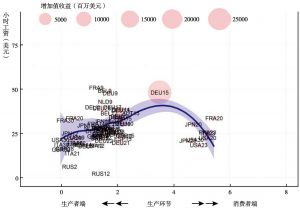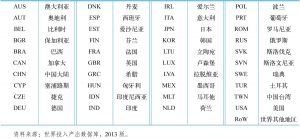章节
全球贸易与全球价值链的近期发展趋势
关键词
作者
[美]杜大伟(David Dollar) David Dollar(杜大伟),布鲁金斯学会约翰·桑顿中国中心高级研究员。
[巴]若泽·吉勒尔梅·莱斯(José Guilherme Reis)
王直 ,对外经济贸易大学全球价值链研究院教授、博士生导师,海外院长,美国乔治梅森大学政策、政府和国际事务学院资深研究员。1985年1月,获中国农业科学院硕士学位;1990年6月,获俄亥俄州立大学硕士学位;1994年11月,获明尼苏达大学博士学位。1985年1月-1987年7月,任中国农业科学院农业经济研究所研究员。1994年7月-1995年8月,任世界银行世界发展报告顾问。1995年9月-1997年9月,任明尼苏达大学应用经济学系副研究员。1997年10月-1999年7月,任普渡大学全球贸易分析研究中心经济学家。1999年7月-2002年7月,任美国农业部经济研究局经济学家。2002年7月-2004年3月,任乔治梅森大学计算科学学院高级研究员。2004年5月-2005年8月,任美国商务部经济分析局经济学家。2005年8月-2011年7月,任美国国际贸易委员会研究部高级国际经济学家。2011年7月-2016年3月,任美国国际贸易委员会研究部资深国际经济学家。2016年4月,任对外经济贸易大学全球价值链研究院海外院长。
检索正文关键字
章节目录
- 一 制造业产品的中间产品贸易与全球经济周期
- 二 识别国内增加值创造与最终产品生产中的全球价值链和非全球价值链活动
-
三 全球经济周期中的全球价值链生产活动
- (一)各类增加值创造活动在全球经济周期中的占比变化
- (二)各类增加值创造活动在全球经济周期中的增速变化
- (三)全球金融危机后经济复苏中的全球生产新格局
- (四)近期经济复苏阶段GDP增长缓慢的影响因素
- (五)在金融危机后的经济复苏期,为何复杂的全球价值链跨境分工减少?
-
四 度量全球价值链中的微笑曲线:增加值和就业机会的创造与分配
- (一)中国信息与通信技术业(ICT)出口的微笑曲线:增加值及工作机会的分配
- (二)中国信息与通信技术业(ICT)出口的微笑曲线:演变规律
- (三)价值链中的“倒转型”微笑曲线
- (四)全球价值链中的劳动生产率和收入分配
- 五 总结
-
附录2.1 在中间品及最终品的全球价值链中转换角色
- (一)东欧经济体对欧洲内部中间产品交易的影响增强
- (二)墨西哥在北美自由贸易区制造业中间品区内贸易中的角色升级
- (三)亚洲全球价值链的分工格局转变
- 附录2.2 国家/地区名称缩写对照表及部门编码表
相关文献
查看更多>>>



